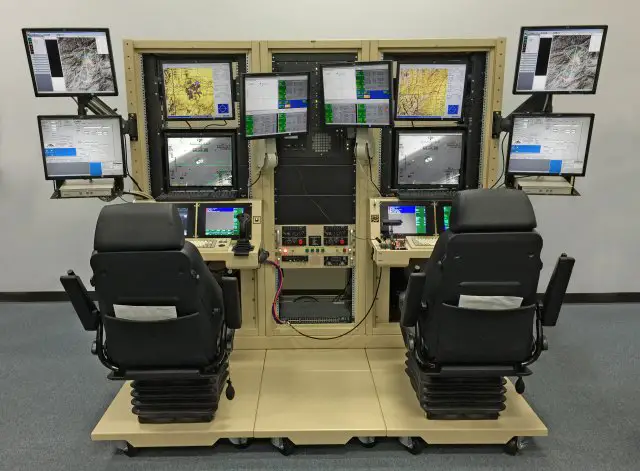Breaking news
USAF made first-ever use of MQ-9 flight simulator during major virtual drill.
| a | |||
|
|
|||
|
World Defense & Security News - United States
|
|||
|
|
|||
|
USAF made first-ever use of MQ-9 flight simulator during major virtual drill
|
|||
|
The US Air Force 432nd Attack Squadron achieved another remotely piloted aircraft first last month by using an MQ-9 Reaper flight simulator in Virtual Flag, the Air Force's largest virtual warfighting exercise, the Air Force announced yesterday on its website.
|
|||
|
|
|||
 The Predator mission aircrew training systems lite is a condensed version of a full-sized simulator, which allows Airmen who work with the MQ-9 Reaper to replicate an active environment, and exercise launch and recovery, and full-mission operations The Predator mission aircrew training systems lite is a condensed version of a full-sized simulator, which allows Airmen who work with the MQ-9 Reaper to replicate an active environment, and exercise launch and recovery, and full-mission operations(Credit: USAF/Lt. Col. Kenneth Degon) |
|||
|
|
|||
|
The 432nd ATKS -- an Air Combat Command tenant unit located at Ellsworth Air Force Base -- has been flying combat air patrols since the squadron was formed in 2012.
In previous exercises, MQ-9 crews had to travel to Kirtland AFB, New Mexico, where the exercise is hosted and used a generic computer to participate. But through a ground-up effort, the 432nd ATKS was able to build and test a new capability to join these exercises from home station using a realistic MQ-9 cockpit. "For 15 years, the MQ-1 and MQ-9 units in the Air Force have not been able to fully participate in one of the main training venues of the Air Force and the other services. Today we've solved that problem," said Lt. Col. Matt Martin, who initiated the project. "Every other weapons system in the Air Force has had this ability for years, and they use it to conduct complex, joint training at a fraction of the cost of live flights. But, because the MQ-1/9 enterprise has been flying nonstop combat missions since 9/11, we're only just now catching up." Called distributed mission operations, the new capability gives the 432nd ATKS the ability to connect its flight simulator to potentially hundreds of other simulators via a global network. The participants can then conduct combat training that simulates highly complex missions and prepare for future wars. According to Lt. Col. David Henshaw, the 432nd Operations Group deputy commander at Creech AFB, Nevada, the achievement is the product of hard work. "This is a great example of innovation at the unit level to solve urgent problems when we have limited budgets and constrained resources," Henshaw said. "With the help of the 28th Bomb Wing, and some groundbreaking work being done by an Army lab in Huntsville, Alabama, called the Joint Simulation Integration Laboratory, the 432nd was able to achieve this using existing resources. We hope to spread this capability to the rest of the MQ-1/9 fleet." The flight simulator provides the squadron with the ability to take part in complex, realistic exercises where they are able to work with live forward air controllers, aircrews from other aircraft, and different command centers, added Capt. Andrew, an MQ-9 pilot who participated in the exercise. "We can connect all our simulators and get great training," he continued. "It's a game changer for us." Stated on the Kirtland AFB website, the Virtual Flag exercises are currently the only exercise to train full-spectrum Theatre Air Control System warfighters from start to finish, and warfighter focused events. "One of our missions in the 28th Communications Squadron is to support the 432nd so they can conduct 24/7 combat operations," said Staff Sgt. Kelby Rossmiller, the 28th CS's lead communications technician on the project. "But they've always had a real challenge getting the training they needed. So when we found out we could help close that gap, we were eager to put in the extra hours and make it happen." Now, with innovative efforts from Airmen at multiple levels, 432nd ATKS aircrews are able to participate in this training. |
|||



















